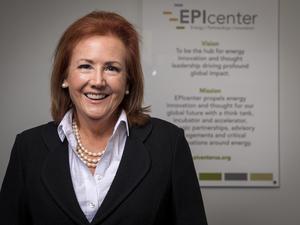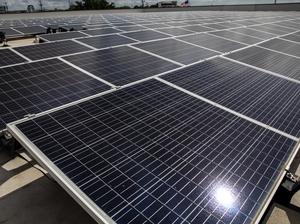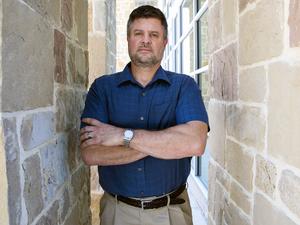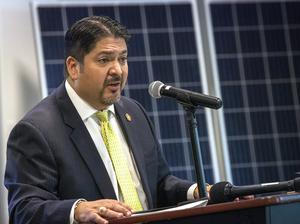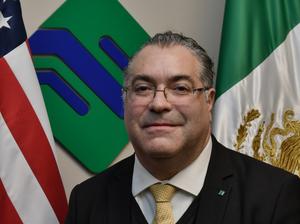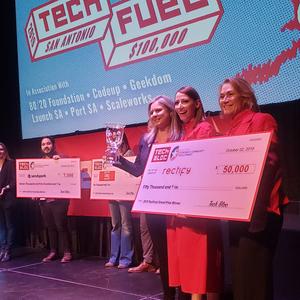When it comes to solar energy, San Antonio continues to lead the state toward a more sustainable future — and energy and business leaders are already looking ahead to what's next for clean energy in the Alamo City.
Environment Texas Research and Policy Center recently ranked San Antonio as the top city in Texas this year and fifth nationally for solar-generated capacity. With 354.9 megawatts of solar capacity — roughly 247.4 watts per person — it's an increase of 40% since 2020.
On May 24, CPS Energy rolled out a new 25-year partnership with Consolidated Edison Development Inc. — a Con Edison Clean Energy Businesses subsidiary — on the largest solar project in the utility's history. Construction on the 300-megawatt solar project, located in Goliad County and poised to create more than 250 temporary jobs, begins next year.
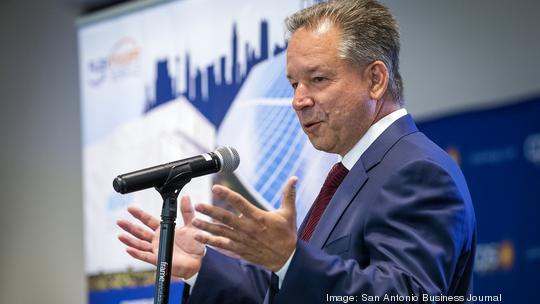
It's just the first stage of the utility's FlexPower Bundle — renewable energy goals set alongside the city in 2020 for the purpose of replacing some of the 1,700 megawatts of energy generated by aging power plants.
With the solar industry's rapid growth, CPS Energy's Board also considered rolling back $15 million in solar rebates first allocated by the utility in December 2018. The utility has paid a flat rebate of $2,500 per solar project and $500 for panels produced locally. For commercial projects, it's also paid a portion of the energy bill.
But with the current energy efficiency program poised to expire in July, a recent vote extended it — along with solar rebates — another five years at an annual cost of $70 million.
Statewide, Texas led the country in renewable energy projects last year, according to an American Clean Power Association report released in February, installing 7,352 megawatts of new wind, solar and energy projects and almost 20,000 megawatts in energy storage installation projects.
Energy Diversity
CPS Energy Interim CEO and President Rudy Garza said the new solar project is just a start, providing only one-third of the capacity provided through the FlexPower initiative. The ultimate goal is adding 900 megawatts of cleaner energy.
Though San Antonio's solar scene is soaring, CPS Energy continues to invest in other clean-energy technologies to scale.
"We're the fourth largest generator (of energy) in the state of Texas, and I'd like to keep us there — regardless of what technology we're using," Garza told the Business Journal.

The utility is also the second-largest harvester of wind power in the state, with more than 1,000 megawatts.
But CPS is also exploring opportunities in both hydrogen energy and geothermal energy, according to Garza. The utility has invested in a hydropump storage facility in San Saba County through a deal with Quidnet Energy.
CPS Energy's coal-fired Spruce 1 location, southeast of downtown on Calavaras Lake — which provided almost 25% of the city's power in 2021 but has sparked controversy among community and environmentalist organizations — could also be a key solution, Garza said. It could provide an opportunity for geothermal energy in the future, using the existing infrastructure of the power plant.
"There may be as much as 2,000 megawatts of ... geothermal capacity at that Spruce site," Garza said.
Garza's chief goal with all new technologies is to ensure reliability and affordability, meaning thorough testing and getting them to an affordable price point before scaling up.
CPS is also trying to obtain more battery storage, Garza said — in addition to its existing 10-megawatt battery at the Southwest Research Institute. But plans remain paused as supply chain issues mean vendors can't yet commit to a price.
Electric vehicles are also on the rise in San Antonio, with Environment Texas estimating that some 40,000 EVs will be on San Antonio roads by 2030. CPS Energy has an entire arm dedicated to electric vehicles, and is working on 20 data center projects in varying development stages, according to Garza.
But energy diversity remains a CPS priority and there's a place for "fossil fuels done right," Garza said — especially since natural gas provides enormous savings to low-income communities.
"I have a gas system that we pump a lot of natural gas into that serves close to 350,000 customers," he said. "We're not going to cap it off and shut it down tomorrow either."
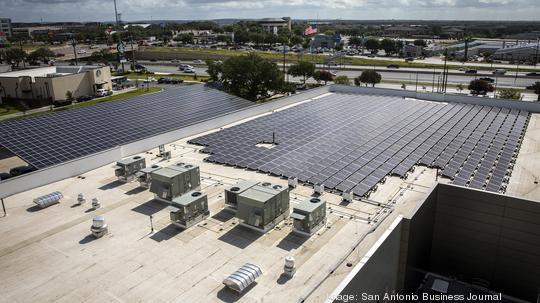
'More powerful and less expensive'
President and CEO of Con Edison Clean Energy Businesses Mark Noyes told the Business Journal that San Antonio could see enormous benefits from its pivot toward clean energy, including improved air quality and lower customer costs.
The price of solar has dropped drastically in San Antonio. according to Noyes. Nationally, it's seen a 64% decrease since 2010, according to a 2021 report by the National Renewable Energy Laboratory. While a module cost $2.50 per watt a decade ago, a full utility-scale PV system now costs approximately $1 per watt, according to the report.
"It's going to get more powerful and less expensive," Noyes said.
Besides solar, Noyes said he's seen renewed local interest in electric vehicles, as well as battery storage crucial for supporting the solar and wind industry. Statewide, he thinks the next clean energy adoption trend will be hydrogen.
"You've got the land, you've got the gas infrastructure, it just makes sense to go ahead and utilize that," he said.
Robert Miggins, cofounder and CEO of Big Sun Solar, said that despite recent challenges in the supply chain, solar project costs continue to trend downwards — a boon for San Antonio's solar industry.
Two factors have encouraged more widespread local adoption: the federal tax credit and local CPS Energy rebates, he said. Though it's possible CPS Energy could still phase out rebates down the line in favor of other community solar projects, Miggins said, he remains confident any replacement program would be equally successful.
Jason Pittman, Big Sun Solar's co-founder and president, told the Business Journal that Winter Storm Uri led many locals to reexamine clean energy alternatives. There's a growing interest in adding battery storage to homes that have rooftop solar panels, according to Pittman.
"With Winter Storm Uri Power outages, the demand for solar plus storage systems which provide resilience against power disruptions has grown substantially," he said.
Pittman has seen strong interest from oil and gas professionals in pivoting focus to renewable energy. He said their skill set is highly transferable.
"Texans 'get' energy and that is helping attract more qualified talent to renewables," Pittman said.
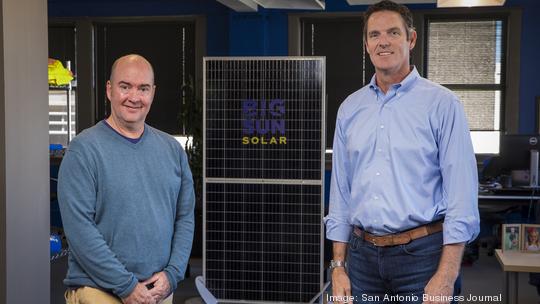
'We're not afraid of renewable energy'
Michael Webber – a Josey Centennial Professor in Energy Resources at the University of Texas at Austin and a global advisor for San Antonio's energy innovation nonprofit, EPIcenter — told the Business Journal that Texas is a global frontrunner in clean energy — and San Antonio is no exception.
"It's a big complement to our leadership in oil and gas," he said.
Texas has 223,406 clean energy workers in renewable energy, solar and wind, storage and grid, energy efficiency, clean fuels and clean vehicles, according to a 2021 report by clean energy industry group E2.
San Antonio has emerged as a leader in clean energy, particularly in rooftop solar, solar farm deals and wind projects — but also in workforce training and smart-energy education within the industry, according to Webber.
The level of engagement by city leaders when it comes to energy and environmental education initiatives, as well as workforce development, sets San Antonio apart, he said.
And — although solar and wind dominate the sector currently — Webber predicts geothermal energy will be the next trend in Texas's clean-energy technology. "We have a lot of drilling expertise in Texas that could be used for geothermal," he said.
Interest in electric vehicles is also on the rise: a 2018 study by Environment Texas Research and Policy Center estimated that some 40,000 EVs would be on San Antonio roads by 2030.
"(In Texas), we do renewable energy at a larger scale than entire countries," Webber told the Business Journal. "We're not afraid of renewable energy despite the rhetoric."
